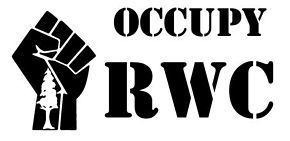Status Ongoing Start date October 28, 2011 | Arrested 0 Injuries 0 | |
 | ||
Methods | ||
Occupy redwood city wells fargo safeway protest
Occupy Redwood City was a collaboration that began with peaceful protests, demonstrations, and general assemblies in front of the historic San Mateo County Courthouse in Redwood City, California. The demonstration was inspired by Occupy Wall Street and is part of the larger "Occupy" protest movement.
Contents
- Occupy redwood city wells fargo safeway protest
- Occupy redwood city occupies wells fargo
- Characteristics of the local Occupy group
- Chronology of events
- References
The aim of the demonstration was to begin a sustained culture of direct action and local activism against income inequality as well as both corporate and government unaccountability in the communities of Redwood City and elsewhere along the Peninsula. Redwood City is the county seat of San Mateo County which is the site of some of California's worst examples of income disparity.
Occupy Redwood City protests perceived corporate greed and social inequality, including opposing corporate influence in U.S. politics, the influence of money and corporations on democracy, and a lack of legal and political repercussions for the global financial crisis. Occupy Redwood City continues to meet on Fridays at 5:00 PM on Courthouse Square, with a general assembly following the rally.
As of June 2012, Occupy Redwood City had continued to engage in organized meetings, events and actions.
Occupy redwood city occupies wells fargo
Characteristics of the local Occupy group
In addition to the Friday protests in front of the historic San Mateo County Courthouse, the group has two functional committees: a Media/Communications working group and a Planning/Events working group. They are currently starting a third working group to lobby local government entities to bank with local, community banks instead of large, national banks.
